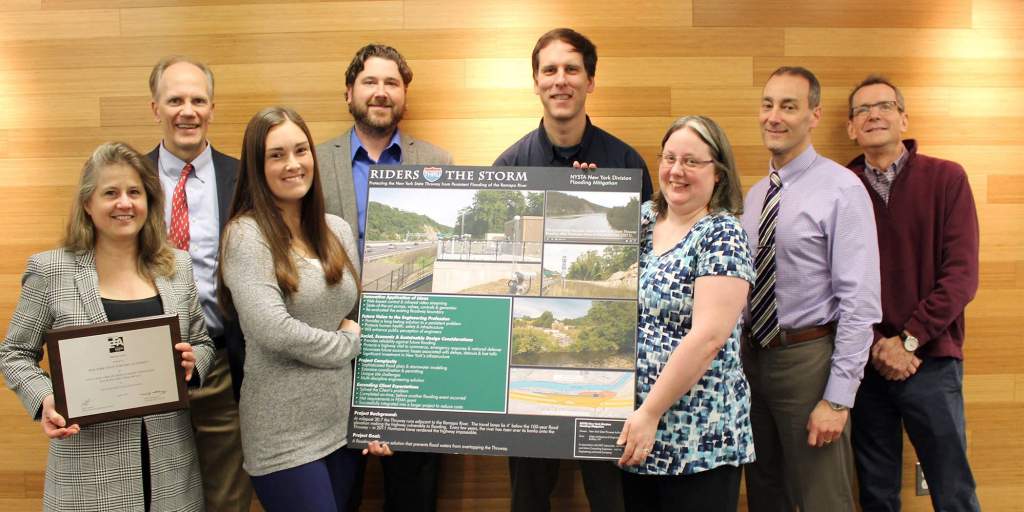NYSTA NY Division Flooding Mitigation is Award Winner
May 2, 2017
Watts received a 2017 ACEC Platinum Award for Engineering Excellence at the Engineering Excellence Awards Gala in NYC on April 1st for “Riders Thru the Storm” entry.
Watts received a 2017 ACEC New York Platinum Award for the NYSTA New York Division Flooding Mitigation project in Category G: Water Resources – Flood Risk Management.
At milepost (MP) 30.7 of Interstate 87, in the Village of Hillburn, the New York State Thruway runs adjacent to the Ramapo River. Every few years, the Ramapo River has risen over its banks and into the travel lanes of the Thruway. In 2011, Hurricane Irene produced a storm that flooded all 10 interstate lanes. To address this issue, the New York State Thruway Authority applied for, and received, a Federal Emergency Management Agency Hazard Mitigation Grant to design a mitigation system for this problem.
Watts’ final design consisted of an 800'-long cast-in-place concrete flood control wall positioned 1' above the 100-year flood elevations. This wall is designed to keep flood waters of the Ramapo from reaching the Thruway. The design also included a substantial pumping station that included 3, 60 hp centrifugal pumps capable of discharging 24,000 gallons per minute from the tributary area of the Thruway. The drainage system at the site outlets to the Ramapo River by gravity flow during normal river stages. During flood events, as the river rises, the drainage system on the Thruway is designed to be switched from gravity flow to pumped discharge via a series of electrically-actuated valves. Operation of the valves directs runoff into the pumping station so that runoff from the Thruway is pumped into the Ramapo River. These actuated valves also prevent the river from surcharging the drainage inlets along the Thruway during flood stages. A natural gas-powered generator was also included to power the pumping station in the event of a power outage. Controls for the pumps, valves, and generator were housed in a precast concrete structure that included a heating and ventilation system to maintain proper operating conditions for the equipment. The entire system of valves, pumps, and generator can be controlled and monitored via a web interface connected by cellular service. This allows NYSTA operators to monitor the water level elevation in the pump chamber by elevation and via an infrared camera.
The final design plans represent a diverse mix of disciplines including hydraulic modeling, geotechnical engineering, environmental analysis and permitting, electrical and mechanical systems, structural design, and transportation engineering.
Congratulations to John Honan, Phil Galbo, Jessica Ross, Jeanette Koch, Justin Kellogg, Virginia Ursitti, Rob Wagner and Mike Pratt who all contributed to this project and the award submission. Great job!
